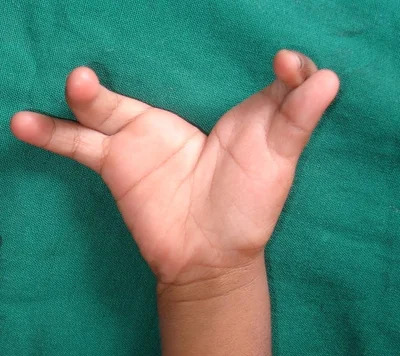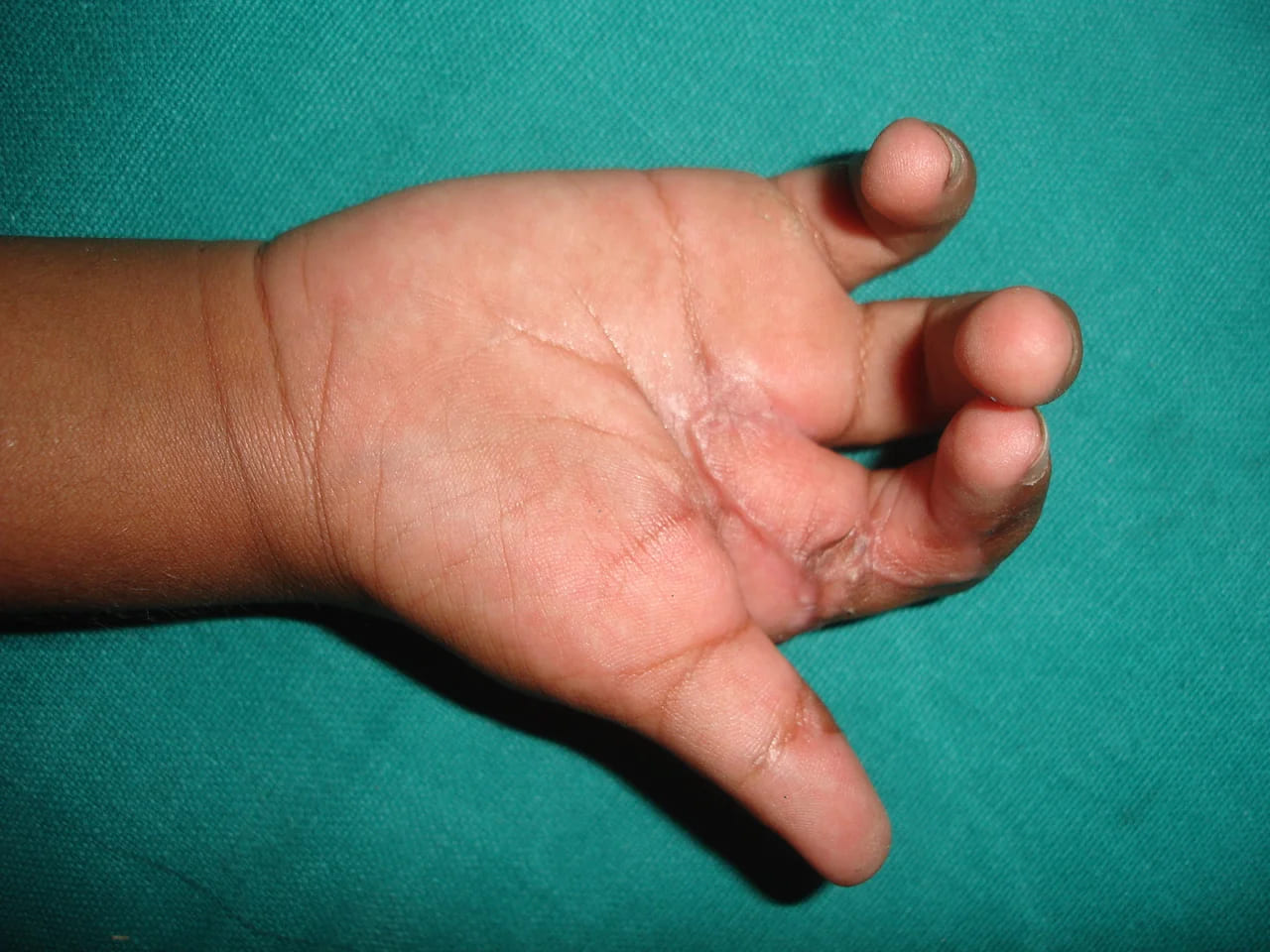Cleft Hand
Cleft hand may involve a deep cleft in the hand without absence of a digit or absence of one or two or three digits. It can be associated with webbing of fingers, extra fingers or a transverse or cross bone at the base of the cleft.
The condition can be associated with webbing of the fingers (syndactyly), extra fingers (polydactyly), cleft feet, cleft lip and palate.

Cause
Frequently a genetic cause can be identified. Split hand Split foot malformations are mostly inherited.
Treatment
These children may be able to do all their daily activities but may hide their hands. Surgical procedures are aimed at creating a wider space between the thumb and the index finger, separating the webbing, correction of the finger deformities and closure of the cleft. Surgery might help in making the hand look better as well.
Post-operatively, the hand will be immobilized in an above elbow Plaster of Paris cast or slab. The child can go home on day 3 or 4 of surgery. The dressing will be changed under anesthesia if needed, at 2 weeks from the date of surgery. The wounds will be inspected with suture removal at the same time






